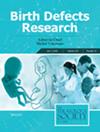Associations Between Exposure to Extreme Ambient Heat During Periconception and Gastroschisis in Georgia, USA: A Population-Based, Matched Case–Control Study
Abstract
Introduction
Epidemiologic evidence on extreme ambient temperature exposures and gastroschisis is limited and conflicting.
Methods
This case–control study included records for liveborn infants in the state of Georgia, USA from 2008 to 2017. Cases included any live births with isolated gastroschisis matched 1:4 to controls free of birth defects based on county of residence and maternal age. Exposure to extreme ambient heat was defined using the 95th percentile of the county-level climatological temperature averages during periconception. Multivariable conditional logistic regression models estimated the adjusted odds ratios (aORs) and 95% confidence intervals (95% CI) for the associations between extreme ambient heat exposure during periconception and isolated gastroschisis.
Results
There were 191 cases of isolated gastroschisis and 764 controls in our study. Compared to no days of extreme heat exposure in the periconception period, exposure to 1–3, 4–7, and ≥ 8 days of extreme apparent temperatures was associated with 19% (aOR = 1.19; 95% CI 1.03, 1.38), 42% (aOR = 1.42; 95% CI 1.06, 1.91), and 70% (aOR = 1.70; 95% CI 1.09, 2.63) higher odds of isolated gastroschisis, respectively. Exposure to two or more and three or more consecutive days of extreme apparent temperature was associated with 58% (aOR = 1.58; 95% CI 1.08, 2.30) and 66% (aOR = 1.66; 95% CI 1.14, 2.41) higher odds of isolated gastroschisis, respectively.
Conclusions
We observed a positive association between exposure to extreme ambient heat and the odds of isolated gastroschisis. These findings highlight the need for more research on these associations and potential interventions to protect mothers and babies.

 求助内容:
求助内容: 应助结果提醒方式:
应助结果提醒方式:


